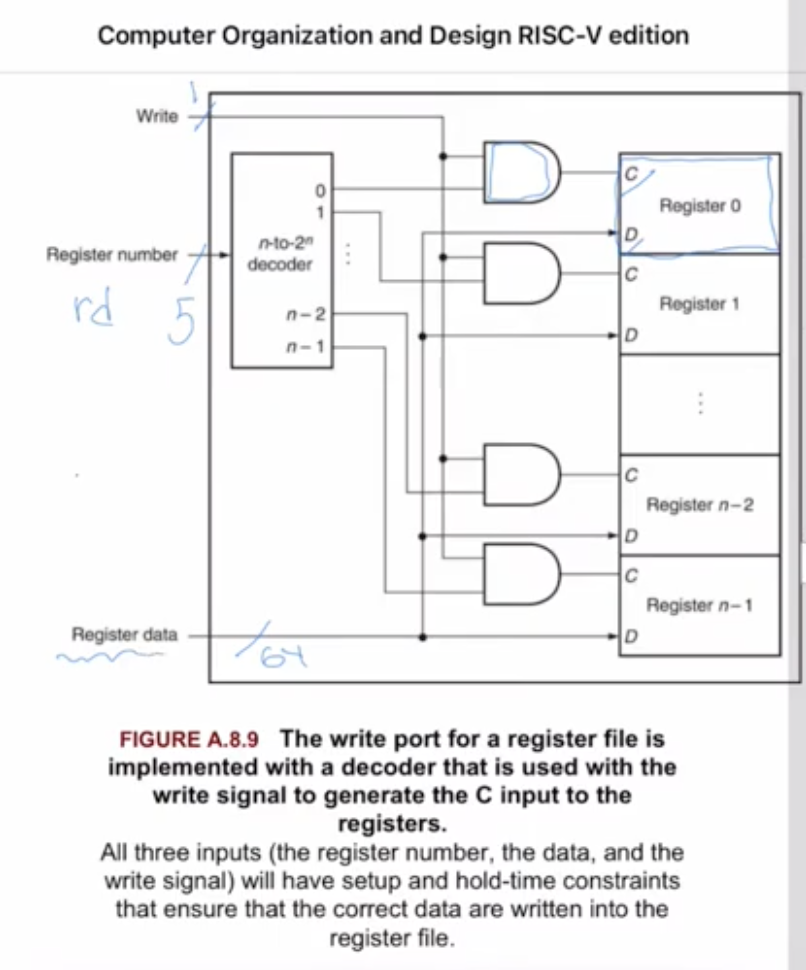Register File
The register file is a collection of registers in which any register can be read or written by specifying the number of the register in the file.
A register file is a State Element that consists of a set of registers that can be read and written by supplying a register number to be accessed.

The collection of the decoder (to select the rd), all the registers and the 32 bit 42:1 muxes (for selecting rs1, rs2, etc) are called the Register File.
i/o values of register file

Read for a register file, select registers, and how to generate output of two read ports
Use multiplexers to select which of the 32 bit registers. Two multiplexers: 64 bit wide. 32:1: mux for the least significant bit, all the way to the most significant bit of our result. Equivalent, 32:1 mux, which is 64-bit wide fo RV-64i.

How to write data to register file
Write: 1 bit, either 1 or 0 to write the data Register number: destination register (rd), 5 bit, goes into a Decoder: A register file comprises a decoder which chooses a destination register and a multiplexer to direct the outputs of any register through to the data output lines. Takes in 5 bits for selecting which register to modify and then will turn on only the write signal for the register we wish to modify.
